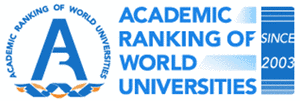Stay in the loop! Subscribe to our mailing list

The 2019 edition of the Academic Ranking of World Universities (ARWU) was released in mid-August by the ShanghaiRanking Consultancy, which has been the publisher of the ARWU rankings since 2009. As of 2003, ARWU has been ranking the world’s top 500 universities, according to its specific yet evolving methodology. Currently, about 1 800 universities are ranked by ARWU per year, with the top 1 000 being published, now for the 2nd year in a row, in the 2019 edition.
There are no surprises when it comes to the ‘top 3’ ranked institutions in the 2019 ARWU – Harvard University tops the ranking for the 17th consecutive year, followed by Stanford University and University of Cambridge, ranked as second and third respectively. The other ‘top 10’ universities are MIT, Berkeley, Princeton, Oxford, Columbia, Caltech and Chicago, in this order. In Continental Europe, ETH Zurich (19th) continues to be the highest ranked university, with the University of Copenhagen (26th) taking the second place amongst Continental European institutions. Amongst Asian institutions, the University of Tokyo (25th) and Kyoto University (32nd) keep their highest ranked positions, while Tsinghua University (43rd) is ranked third amid Asian universities. The University of Melbourne (41st) is the highest ranked amongst the universities in Oceania.
The ‘new entries’ in top 100 are Shanghai Jiao Tong University (82nd) and The University of New South Wales (94th), while the top 500 and top 1 000 feature 13 and over 50 institutions respectively for the first time.
As in previous years, the top 1 000 is dominated by US universities – with 8 of them in top 10, 45 in top 100, 137 in top 500 and 206 in top 1 000. China counts 154 universities in top 1 000, of which 66 are in top 500, and 4 in top 100. The United Kingdom has 61 institutions top 1 000 universities, with 36 of them listed in top 500, and 8 in top 100.
The 2019 ARWU ranking is based on six mainly research-focused indicators, as follows:
More information here
Photo source: www.shanghairanking.com